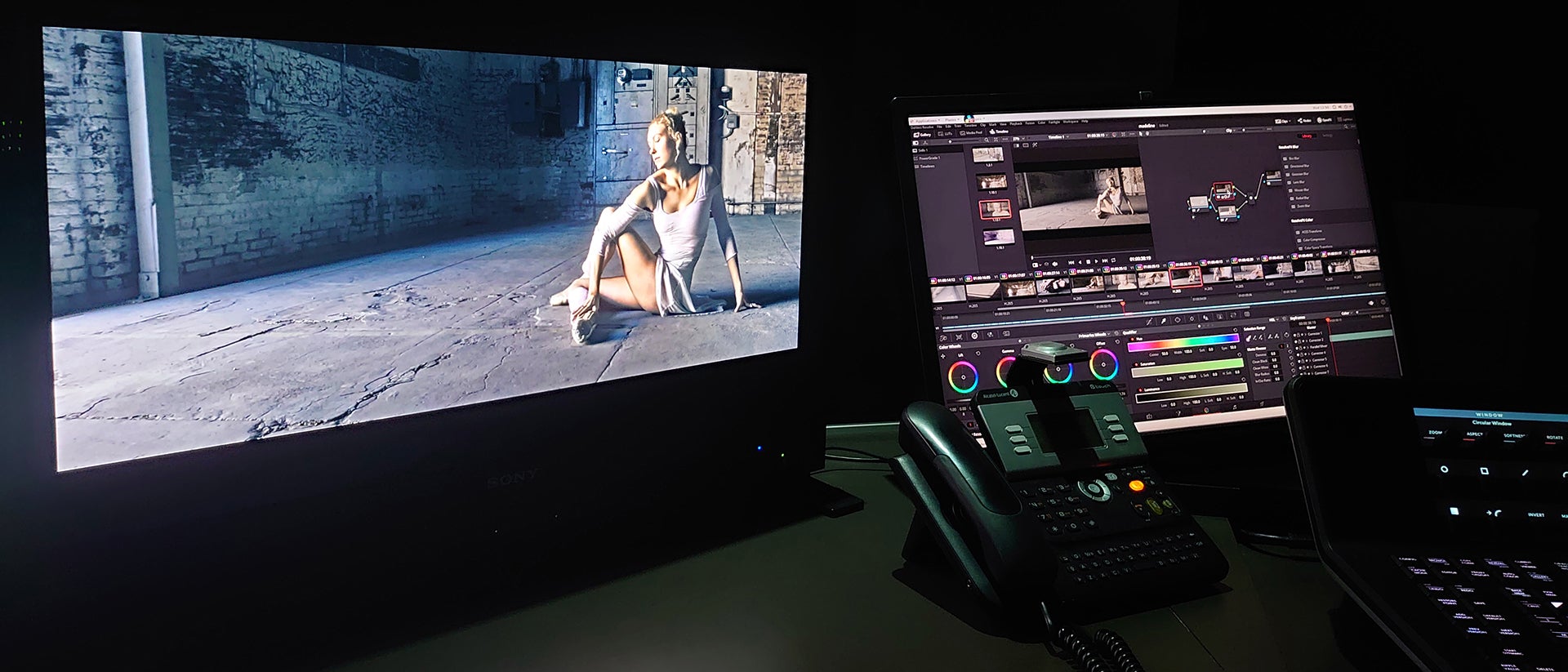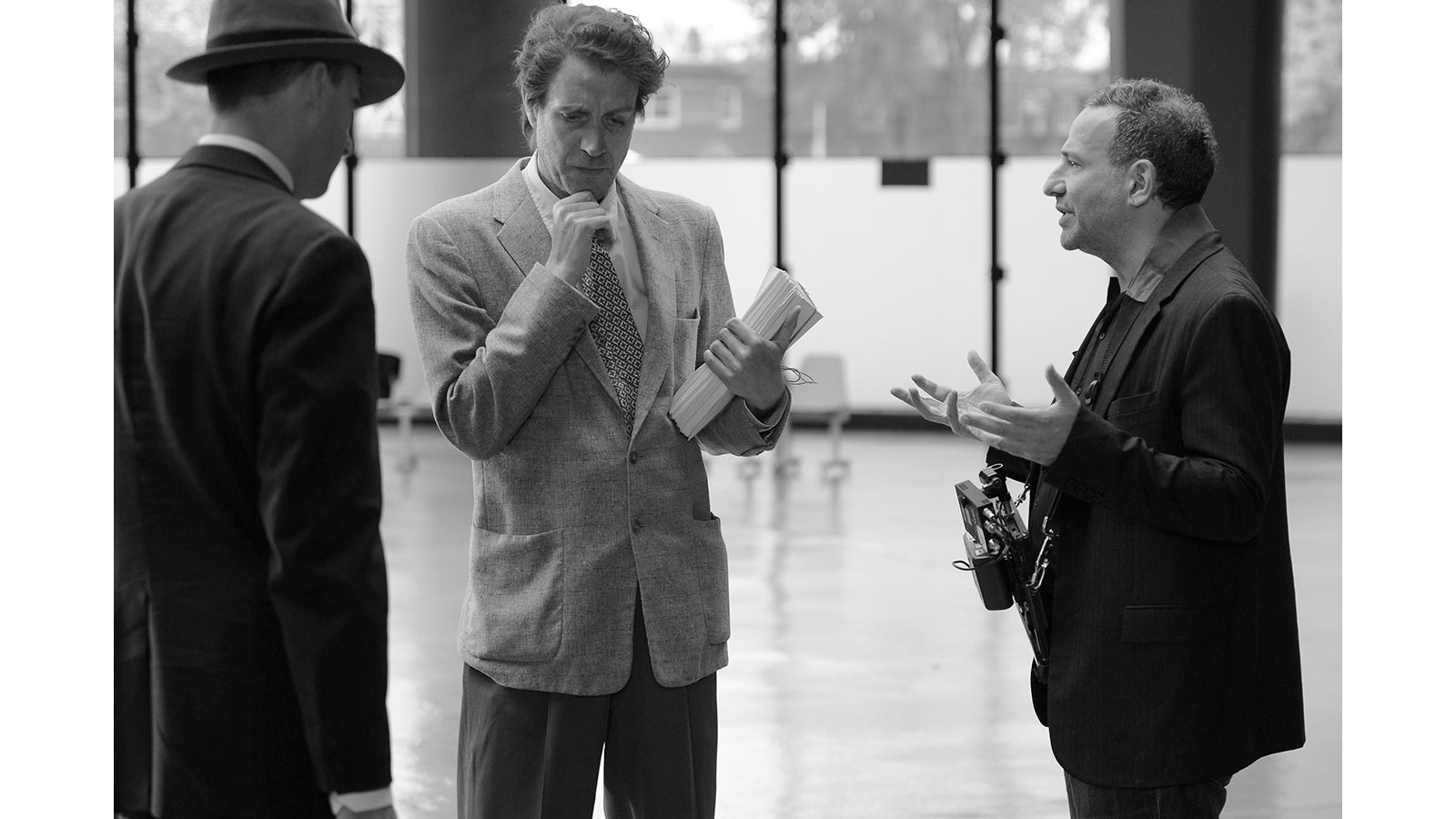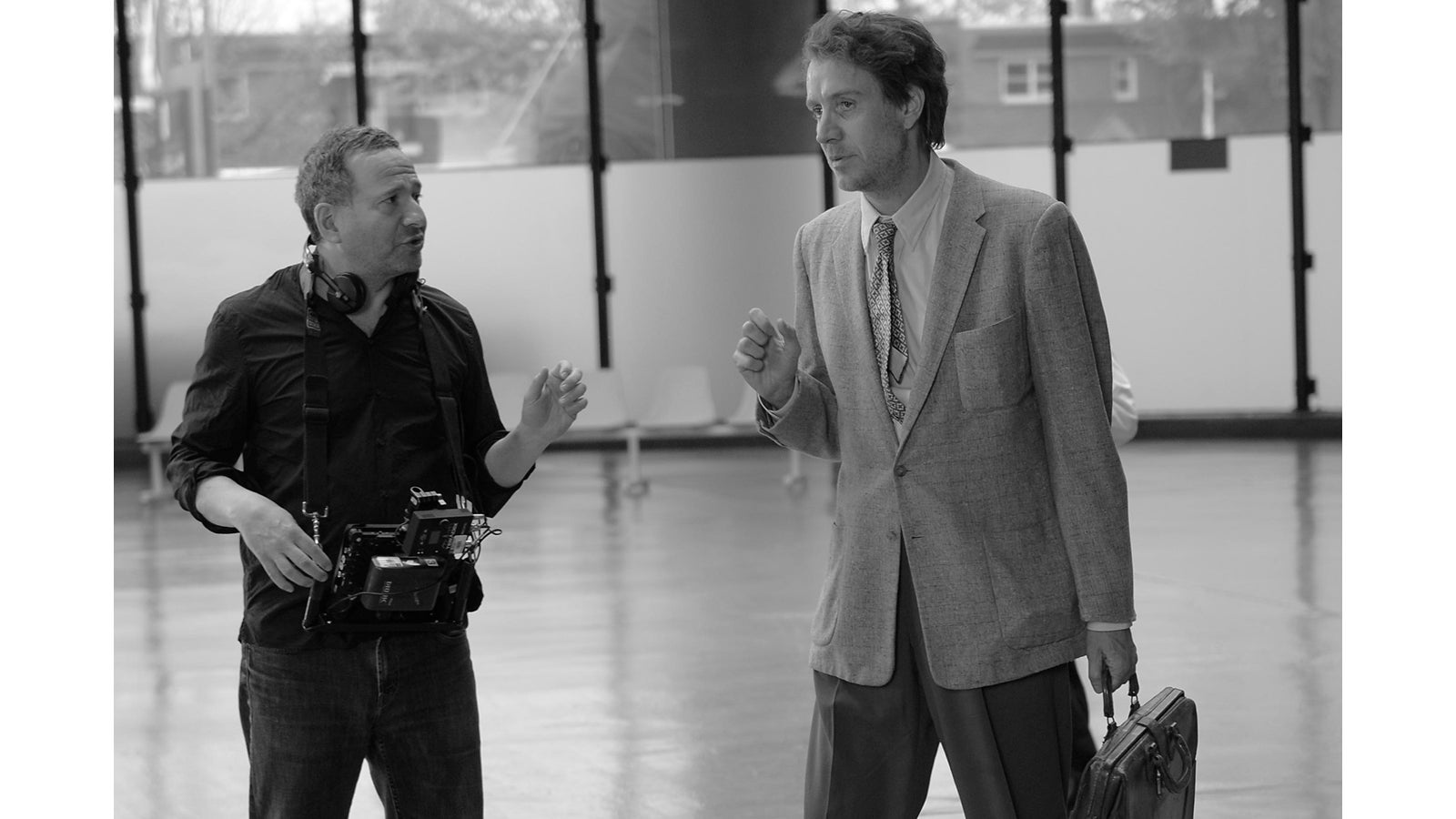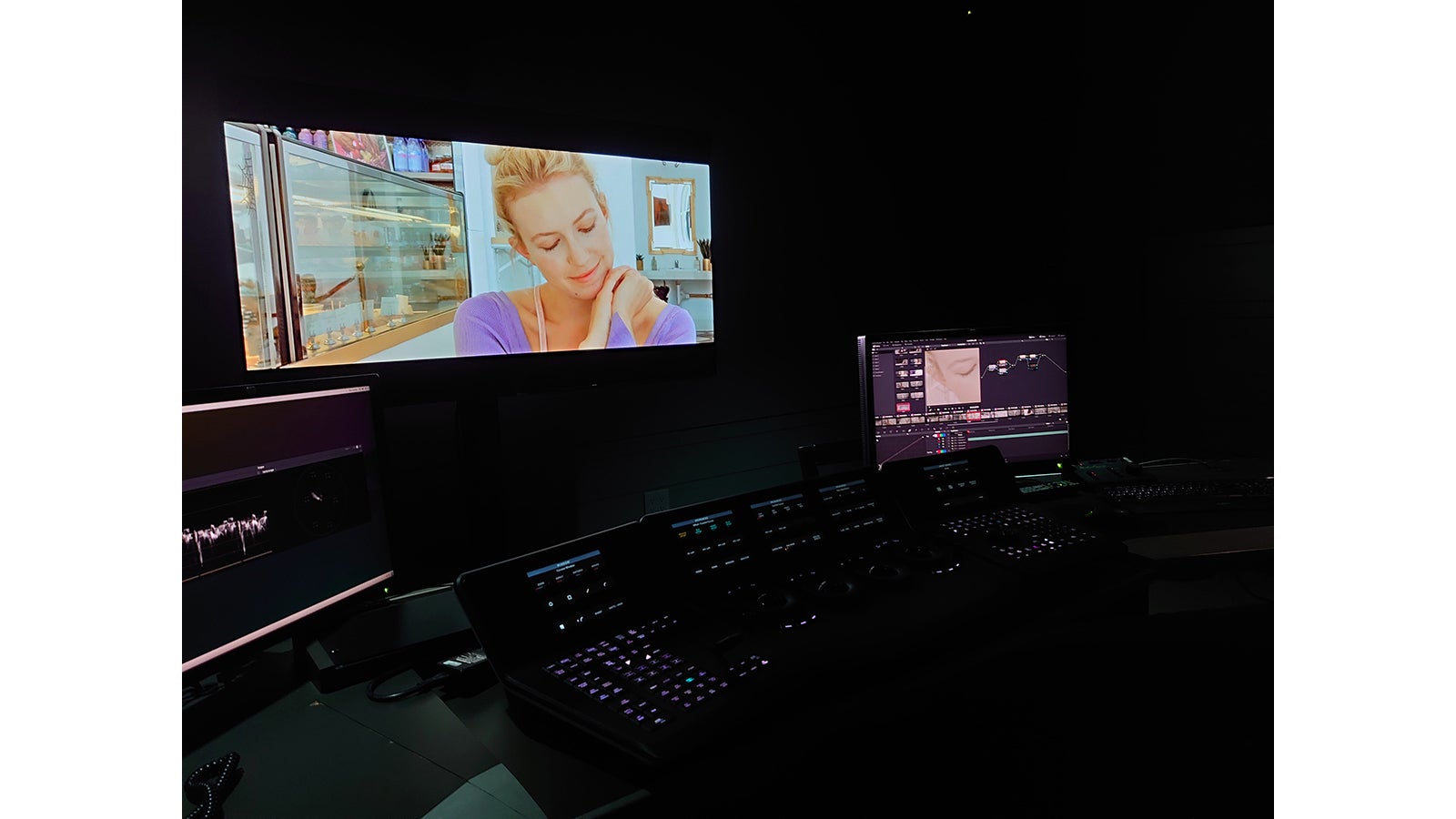
08-11-2020 - Case Study
The Relationship Between the Director and the Cinematographer - Part 5 of a Series -- Collaboration On Set and During Post
By:
Follow this link to read Part 1 - The Relationship Between the Director and the Cinematographer - Part 1 of a Series
Follow this link to read Part 2 - The Relationship Between the Director and the Cinematographer - Part 2 of a Series
Follow this link to read Part 3 - The Relationship Between the Director and the Cinematographer - Part 3 of a Series
Follow this link to read Part 4 - The Relationship Between the Director an the Cinematographer - Part 4 of a Series
Author Steven Bernstein, DGA, ASC, WGA is an ASC outstanding achievement nominee for the TV series Magic City. He shot the Oscar winning film “Monster,” “Kicking and Screaming,” directed by Noah Baumbach, “White Chicks” and some 50 other features and television shows. The second film he wrote and directed, “Last Call,” stars John Malkovich, Rhys Ifans, Rodrigo Santoro, Zosia Mamet, Tony Hale, Romola Garai and Phil Ettinger, is scheduled for release later this year.
Steven can be followed at Stevenbernsteindirectorwriter on instagram where he regularly posts short insights and illustrations about filmmaking.

The shooting day
After all the planning, the first day of shooting finally arrives.
Airplane pilots learn early in their training that they are to have a checklist in their cockpit, which they are to use as they prepare their plane for take-off. The checklist cannot be varied or ignored. It becomes a ritual and by using the same procedure repeatedly, the likelihood of missing something essential is much reduced.
I feel the same about on-set procedures. It's reassuring for a crew to know that the director and cinematographer have the same ritual for every set-up, day in and day out. Most people use the same methods. Everyone who works on films knows them.
The day begins with a blocking with the actors. Usually, right at call (the beginning of the working day), the actors are pulled out of make-up and wardrobe and brought to set. The crew steps away, and the director and the actors, the continuity person, the DP, the assistant director, and the sound recordist stay. The director will speak to the actors, they may run some lines, and then they put the scene on its feet, as in they begin working out the blocking. This is the determination of where the actors are going to move during the scene. The cinematographer will probably have a director’s finder, which is a viewer with the lens on the front that allows the cinematographer to visualize the shot and check various angles. A visually inclined director may themselves determine where each camera position will be. With non-visual directors, cinematographers may be making these decisions. In either case, there will be consultation between the two. Once all the camera positions are determined, and once it is determined where the actors will go, the crew is called back in, there is a blocking rehearsal, and the camera assistant marks the camera's positions and the actor's positions with tape or small sandbags. The actors go back to hair and make-up and stand-ins re-enact their actions, and the crew begins to light and rig. Many readers will know this procedure already. As a director, I like to vary it.
It is very hard being a director on a film, as I have emphasized here repeatedly, and one of the things that makes it difficult is the fact that the entire group observes every action and decision. It is creating art in a fishbowl. It is impossible not to be aware of everyone watching, and when people are watching people's behaviour alters, including a director's behaviour. The interaction with actors is a delicate thing, and the actor's behaviour also changes. Even the reduced crew used for rehearsals still inhibits honest interaction between actor and director. So I do my blocking with just me and the actors and no one else. It's frustrating for the cinematographer and crew members because they want to know where to place lights and equipment. But it exponentially improves performance and is worth this relatively small inefficiency.
Using this different system, once everyone is brought in for the blocking rehearsal, all the technical details can be worked out. I am open at this point for input from the cinematographer and the other department heads about how the action might be altered.
To be honest, when I was a cinematographer, I was opposed to being excluded from rehearsals. I would take photographs of the projected camera positions. I would then print and mount the pictures so everyone would know what shots were intended.
Two different approaches and both have their advantages.

Steven Bernstein directing Rhys Ifans and Tony Hale on the set of "Last Call"
Multiple cameras
One of the things that has to be agreed by the cinematographer and the director, and very possibly the producer, is whether to use multiple cameras. Some cinematographers object to multiple cameras because of the compromise necessary in lighting. It's hard to create the exact modelling when there's a camera opposite pointing right at the place where lights would ideally be positioned. Some directors object to multiple cameras because they have trouble concentrating on more than one camera when judging performance.
I am a director, and I was a cinematographer, and I have sympathies with both positions. But I remain a big advocate of multiple cameras. There is no question that the shoot goes faster when using two or three cameras. Additionally, a lot more material is recorded on camera, which will give the director more options in the editing room. Also, there's an improvement in performance when actors are opposite each other and going full bore rather than just providing off-screen looks. Some of the best reactions I've ever gotten from an actor are when they are simply listening, and those shots often were captured because of a second camera. For in-car sequences, I sometimes use five or six cameras as I don't want to repeat the driving (and then turn the whole rig around, then drive again, get a few shots, and then turn around again, get a few more shots, and soon the whole day is gone). It takes a long time to rig a car even with one camera, so I want to make the best use of the time and get every bit of a performance.
This all goes right to the heart of the director/DP relationship. What is the DP willing to give up in image quality that might provide an overall improvement in the film? For me, the solution was to find a new lighting method that allowed me to shoot both ways and using longer lenses with the cameras further back to get them out of each other's way. Was this a compromise? Absolutely. But by using it on “Monster” and other films we captured better performances, we got more material, and we moved more quickly. It was worth it.
Let me take a minute to talk about time, money, and quality. The director wants to make a good film. But they are constantly watched by producers to see if they are both responsible and skilled. A director who doesn't get their scheduled scenes completed in a day or goes over budget may have trouble finding work in the future. A cinematographer who is slow and causes a film to drop behind schedule might have the same problem. There is a way to address this, even before a film starts. Some things that help films move along more quickly can appear on paper to increase a budget and may be rejected by producers, things like a second or even third camera. But for the director and the DP this paper expense is actually a saving. The initial budget rarely reflects the reality of a film shoot. Spending a little more initially and investing in time-saving measures, like multiple cameras, like pre-rigged lights, larger crews (who work faster), more experienced technicians (who charge more but work faster and make fewer mistakes), all contribute to things being done in less time, for ultimately less money, and producing a higher quality product.
I always thought it odd that producers euphemistically call extra equipment the "cinematographer's toys." They aren't toys; they are tools. They are tools that help the cinematographer achieve the director's vision in a timely, and ultimately economic, way. That's why the director should support the DP's requests for specialty equipment and good, sometimes large crews. It isn't the first budget that matters. It is the final one. Good crews with good equipment move fast.
There is an old joke in the film industry. A director or a DP says to a producer who is pushing them too hard, "You can have time, money and quality, but you can only pick two." I think a director and cinematographer working closely together can achieve all three.

Steven Bernstein directing Rhys Ifans on the set of "Last Call"
More about the shooting day
As the shooting day continues, the crew moves from set-up to set-up, repeating the same ritualized behaviour. The assistant director will be doing their best to make sure things move along quickly. If the unit falls behind the director, AD and DP will consult and decide if shots should be dropped or moved to another day. Staying on schedule is a shared responsibility. If a director requests a time-consuming shot, the cinematographer should explain the impact that choice will have on their schedule. But the cinematographer should be careful not to use the director's concern about the schedule to avoid doing shots they don't like. It's an old, sad trick of cinematographers to claim shots will take much longer to achieve than they will, if the cinematographer doesn't want to do them. The cinematographer knows everyone will panic if they think lighting will take a long time. No one should be that unprofessional. If a shot is difficult, the DP should use their knowledge to achieve it in the time available. Only if they are certain it is impossible do they give the director the bad news that it will use a lot of the shooting day to achieve. Then the director can decide what to do.
When things have to be sacrificed, there is a rank order of selection, and the last thing that should be sacrificed are those elements the director wants. If lighting, or camera movement, or something else can be compromised, as painful as it may be, those things must go before elements of the director's vision.
The actors
The director spends a great deal time working with the actors, but the cinematographer will also be interacting with the performers. Acting is difficult with sometimes hundreds of crew members watching, bright lights shining in your eyes, and narratives told out of order. Actors need help, and the cinematographer should create an atmosphere that facilitates the actor (and thereby helps the director)
One thing the cinematographer can do to help the actors is to reduce the number of technical distractions on set once the actors arrive. I believe that once the cinematographer is finished with lighting, they should really be finished with lighting and shouldn't then tweak or adjust equipment when the actors are on set. With the pressure from the assistant director and producers, there is a temptation for cinematographers to say they are ready when they aren't ready. They shouldn't do this. It is better to tolerate the disapproving glares of the AD and get all the lighting and camera positioning right while the actors wait in their trailers than to try to sneak in some extra work after the actors get to set. A DP may be used to the moving of heavy equipment used for lighting and grip work. An actor may not be as comfortable. It can distract and upset them.
The crew will also look to the cinematographer to establish a general atmosphere on set. They can sound like building sites or parties. I like sets to be very quiet. I try to lower my voice and whisper once the actors arrive just to encourage the rest of the crew to do the same and allow the actors to concentrate. Treating actors like crew may seem egalitarian. But they have to create nuanced performance in front of the camera. A quiet set makes for better performances.
It is also important to remove visual distractions. I will make sure there is nothing in the actor's eyeline which will cause them to look away from their facing actor, or lose concentration even for a second. Let me say as a director of actors, I understand how hard their job is, and I regret that the technicians aren't always as respectful as they might be. Some think actors are difficult when asking crew members to clear an eye-line or for work to be concluded before they arrive on set. They aren't difficult. They are protecting their performance, and thereby the film and thereby the director.
The cinematographer can also assist the actor by telling the actor what lens they are using and the position of the key light. Knowing the lens allows the actor to measure the size of their performance. For big close-ups, they will make the performance smaller and more subtle. On wide shots, they can make greater use of their body. As for the key light, if they know where it is, they can decide when to turn their face towards their key to emphasize parts of their performance. Directors are hugely grateful for this sort of support from the DP.
The shooting week
As the director, cinematographer, and crew work through each day, they become more efficient and better understand each other's requirements. Naturally, some days will be better than others, but with good leadership and good communication, the shoot will be successful.
It's a good idea to review the progress periodically that's been made and the work that still lies ahead. That is why I am such a strong advocate for the five-day work week. Besides giving the crew time to recharge, it also allows the cinematographer and the director to examine where they are and how they might be better in the coming weeks. It is the unsaid things that destroy us, so it is also another opportunity to discuss anything that isn't working between them.
I also think that the old tradition of watching dailies together is a valuable one. The creative collaboration between the DP and the director is a constantly evolving one, and because it's principally concerned with the visual, visual references (the dailies) are needed for the continuing discussion. But they should be watched and experienced together. Otherwise the two parties' pre-dispositions will determine what they think they see, which may not be what is really there. Taking the time to watch dailies together really builds a bond between the DP and the director and gets them completely aligned.
I also strongly advocate, employing an editor from the first day of photography.
For the cinematographer and director to see cut scenes allows them to quickly understand if the film is working. Also, it's far less expensive to pick up shots that didn't work while still in principal photography, rather than commissioning re-shoots later.

Director Patty Jenkins and Charlize Theron at work on "Monster"
The relationship with the producer
The producer is an important part of any film as they have either raised the money or are responsible for its use. Naturally, they will be carefully monitoring the shoot.
Like all the other relationships on set, in the high-pressure environment, at some point, the producer and the director will be at odds. This can be thorny for the cinematographer. Many producers will try to build an alliance with the cinematographer so as to enlist them to influence the director to do certain things the producer thinks essential. I have had late-night phone calls from producers trying to instruct me to force directors to get certain shots or work more quickly.
I understand the producer's perspective; they are frightened that the film will go wrong, and they will lose money. The cinematographer is in a difficult position as they have been hired by the producer. I would go so far as to say that every cinematographer has a responsibility to their producers and must do their best to bring the film in on schedule and on budget and at a high level of quality. But the cinematographer should explain to producers who clandestinely try to enlist them in plots against the director, that it subverts the relationship between the director and cinematographer and will ultimately do damage to the film. That doesn't mean the cinematographer should oppose the views of the producer, but issues that are between the director and the producer should be worked out between the director and the producer.
It's an entirely different matter when the producer speaks to the cinematographer about issues specific to the cinematographer's job. If the producer needs the production to go more quickly, they may ask the cinematographer how this can be achieved and the cinematographer can suggest things like multiple cameras or pre-rigging. If the producer feels the lighting lists provided by the DP are too big and expensive, the cinematographer can try to influence the supply company to reduce their costs. DP's have influence with suppliers because they provide them work. These are reasonable ways for a cinematographer to support production without undermining the relationship with the director. The cinematographer should never be so misguided as to think they only work with the director. They have a responsibility to the producer and the production and must make sure that the film comes in on time and on budget. But they also must make sure they realize the director's vision.

Bernstein directing Helen Hunt on the set of "Decoding Annie Parker"
Post-production
Young cinematographers are often surprised that whereas they seem loved and celebrated when at the center of the action on a film shoot, they are virtually ignored once the post-production begins. This is just the nature of the film industry, and when people are dependent on you, whether you're an actor or cinematographer, they will be kind while you are needed. But when the shoot is finished, there are new people who require love and flattery and new dependencies. The cinematographer shouldn't worry. Providing they were loyal to the director and showed good leadership, kept on schedule, resolved conflicts, and did good work; the director will hire them again or recommend them to others. Maybe.
Every relationship has a momentum. It's hard to start a new relationship. It's exhausting and time consuming so directors generally would rather work with cinematographers with whom they have already built a relationship. If, on the other hand, the cinematographer was constantly at odds with the director, as beautiful as the film might look, the director won't want to repeat the experience. A cinematographer may be brilliant, but sometimes people hire others who are a little less brilliant but with whom it is easier to get along. As for producers, they will be delighted if you bring a film in on time and on budget, but as it is usually a director's choice as to who they hire as cinematographer, it's unlikely the producer will be getting the cinematographer additional work. The director will go a long way towards determining the DP's future.
Late in the post-production, the cinematographer is called back in to do what is called the color grading or color timing. Generally, the cinematographer will work with the colorist on creating the final look for the film. The director will come in later in the process to add their input. In my experience, the director will usually accept the majority of the work that has been done in the color timing. Occasionally they may want a shot darker or lighter or a face to be more clearly seen or part of an image to be enlarged and things like that.
A note of warning. On first viewing, directors, and I include myself in this group, are usually shocked by the color grade. The director has been months in an editing room seeing a low-resolution version of the film without correct color balances. But oddly, they become used to it. They come to the color session and see a whole different film, and even though it looks better, on the first pass they think it's entirely wrong. Both as a director and a cinematographer you have to anticipate this and recognize the graded version really is better. Really. But it takes a while to come around to that view.
By the way, it is very rare for the cinematographer to get paid for the weeks they will spend on the color grade. This is one of the great mysteries of the film industry. The cinematographer is essential to this process, and yet somehow it's seen as a voluntary contribution. With the support of directors, this may someday change.
The cinematographer will work in the color grading suite with the colorists. These people are highly skilled and brilliant in their own right, so once again there is all the complexity of collaboration. It's usually very satisfying. But it can be a relatively short relationship, though some cinematographers have colorists they collaborate with on numerous projects. With colorists, it's not always the same long journey that the cinematographer has been on with the director, coming to understand intentions, visual antecedents, and creating a creative vision - working through complex personal dynamics while together leading a crew and facilitating actors while making art against the clock under severe pressures. In the end, it is a very, very special thing this partnership between director and cinematographer.

Color suite at Technicolor Hollywood




